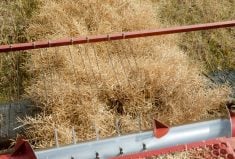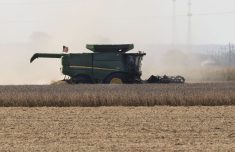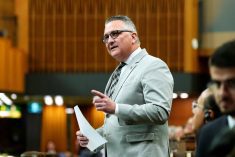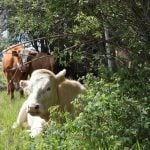CHICAGO (Reuters) — The number of cattle placed in U.S. feedlots in August declined three percent from a year earlier to the lowest level for the month in 18 years, a government report showed on Friday, although the drop was not as big as analysts had expected.
Analysts said the decline was in part due to the availability of grazing pastures, which allowed ranchers to fatten cattle outside of feedlots longer.
Nonetheless, a few more cattle wound up in feedyards than anticipated after feedlots purchased feeder cattle, or young calves, to take advantage of profitable margins and low-cost feed, analysts said.
Read Also

Trump mulls ending some trade ties with China, including in relation to cooking oil
U.S. President Donald Trump said on Tuesday Washington was considering terminating some trade ties with China, including in relation to cooking oil.
The U.S. Department of Agriculture report showed August placements at 1.720 million head. That was down three percent from 1.772 million a year earlier and the smallest for the month since USDA began the current data series in 1996.
Analysts, on average, had expected a 4.5 percent August placement decrease.
“We’ve had good grass conditions… and guys have been growing feeder cattle outside of feedlots a little more aggressively,” said U.S. Commodities Inc analyst Don Roose.
Because the herd was the smallest in 63 years, feedlots brought in cattle to help fill surplus capacity, Roose said. Additionally, those who raise high-priced feeder cattle have been nervous about holding on to them much longer, he said.
Jim Robb, director of the Colorado-based Livestock Marketing Information Center, said placements were actually in line with expectations given a bigger-than-expected “other disappearance” category in August, which was at 132 percent of a year earlier.
The category could include death loss, heifers redirected toward breeding programs, or animals moved from one feedlot to another, he said.
The report confirms tight overall cattle numbers ahead, which should quiet the debate about how supplies are shaping up, Robb said.
USDA put the feedlot cattle supply as of Sept. 1 at 9.799 million head, down one percent from 9.876 million a year earlier. Analysts polled by Reuters, on average, had forecast a decline of 1.1 percent.
The feedlot supply is the smallest for Sept. 1 since 1999, when there were 9.536 million.
Fewer cattle are available to be put on feed after several years of drought hurt crops, which shrunk the herd to its smallest since 1951, analysts said.
The government said the number of cattle sold to packers, or marketings, was down 10 percent in August from a year earlier to 1.692 million head. Analysts had projected a drop of 9.3 percent from 1.871 million last year.
There was one less day to market cattle in August 2014 than in August 2013.
















